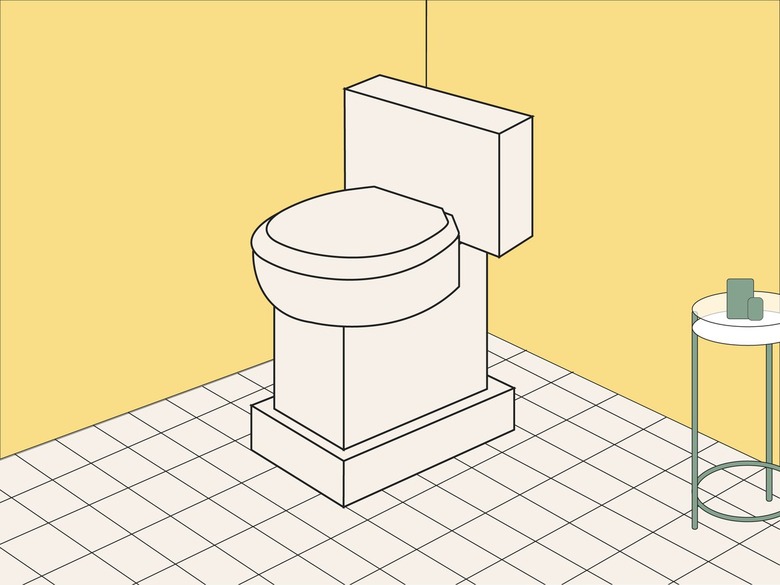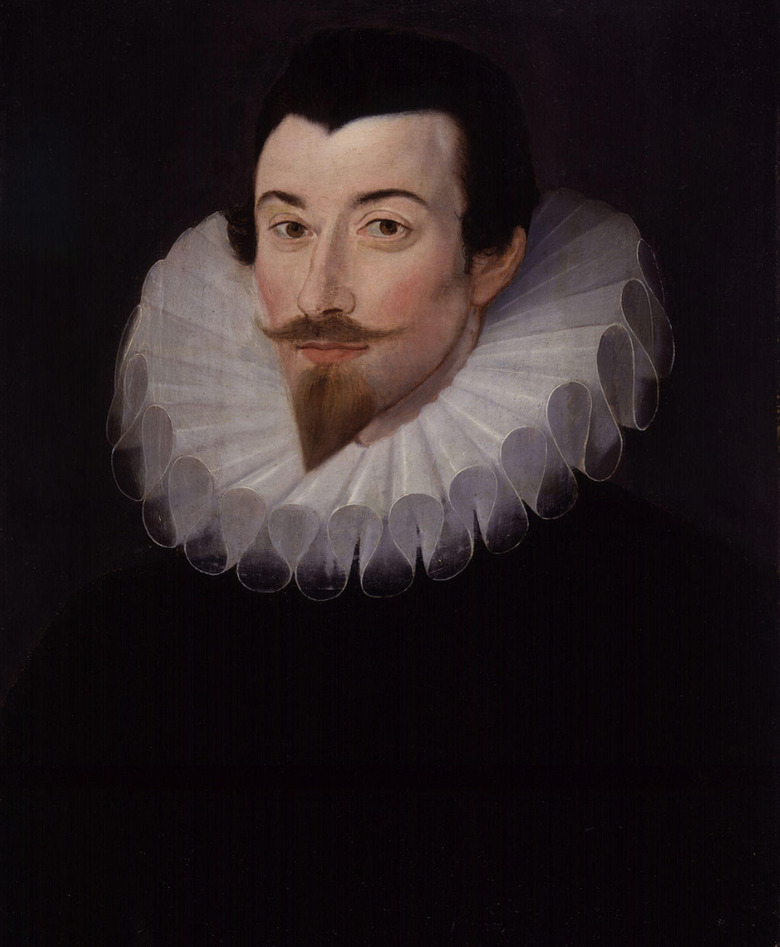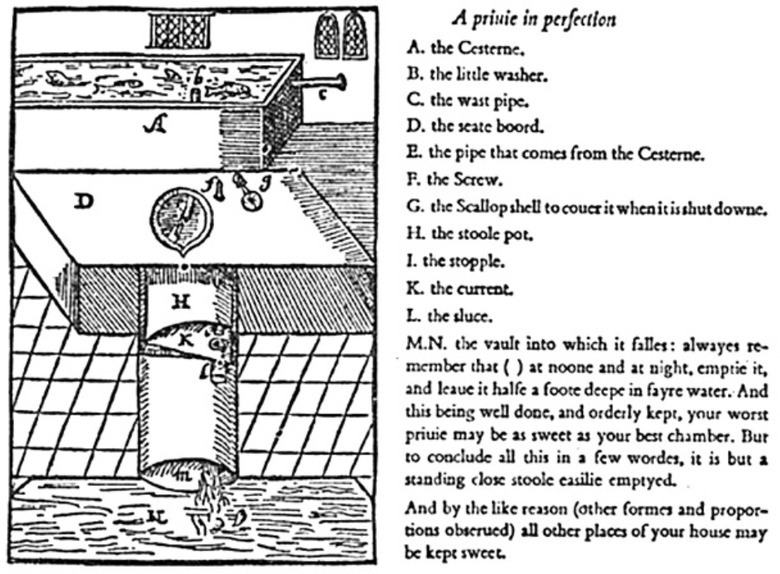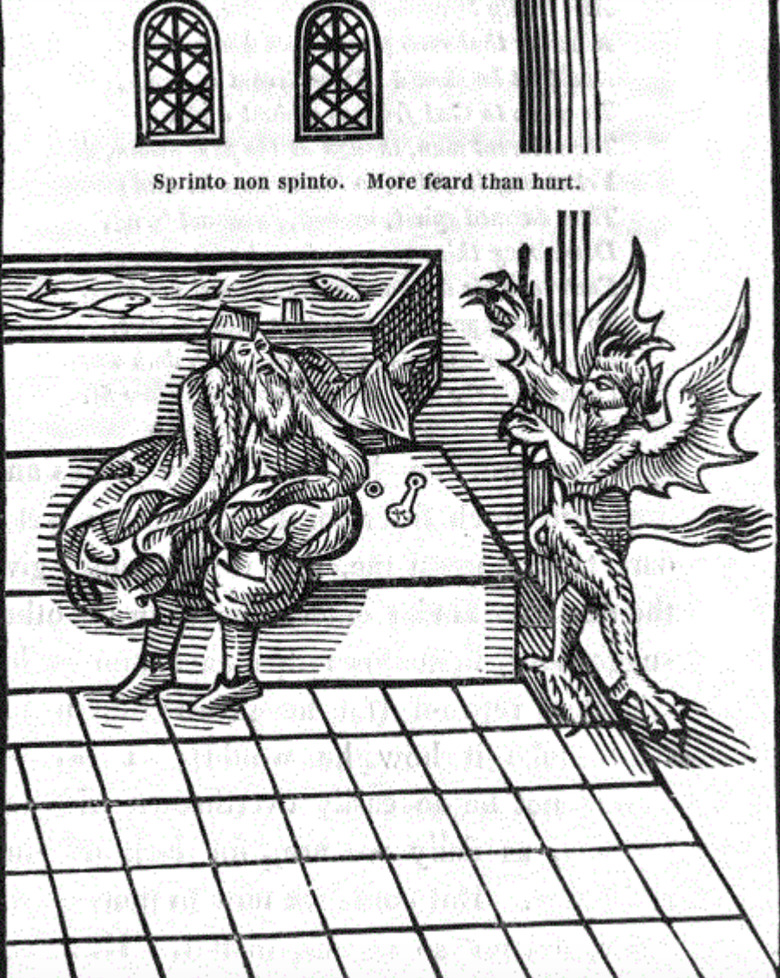"The John": Why Do We Call Toilets By A Man's Name?
The toilet goes by a lot of names, including the "John," "potty," "crapper," "loo," head," "bog," and "porcelain throne." People love using euphemisms for what they do in the restroom, but some of those names still seem rather strange to people in modern times, especially "The John." Interestingly, this nickname dates all the way back to the middle ages, but what really sealed it into our vernacular was that it just happened to be the name of the first flushing toilet's inventor.
Where Does the Name "The John" Come From?
Where Does the Name "The John" Come From?
We'll get the basic etymology out of the way: "John" as slang for toilet probably derived from "jakes" or "jacks," medieval English terms for what was then a small, smelly loo inside the house if you were very fancy and outside the house if you were slightly less so. "Jake" and "jack" were common nicknames for common men, and by the 1400s those nicknames were applied to common objects and functions — like the toilets of the time and the business done on them.
This might be where we'd wrap up if not for the fact that "John" also happens to be the first name of the man largely credited with inventing the modern flush toilet, giving "the john" a double origin story historians and amateur wordsmiths happily debate today.
Who Invented the Toilet (aka "The John")?
Who Invented the Toilet (aka "The John")?
John Harington (a distant ancestor of Kit Harington, also known as Jon Snow) was born during the reign of Queen Elizabeth and through his mother, a member of the queen's privy chamber, was made one of her 102 godchildren.
As an adult at court, he flourished —he was widely praised for his poetry and prose, much of which skirted the line of decency so much that he became known as the queen's "saucy godson." A hobbyist inventor, in the early 1590s Harington devised a mechanism for a flushing toilet, and word of his creation quickly spread. In much of Tudor England sanitation was both a superficial and serious concern, and the idea that a simple device could carry waste farther away from private spaces with less manpower was thrilling to members of court.
In 1596, Harington published A New Discourse of a Stale Subject, Called the Metamorphosis of Ajax, a literary pamphlet on the subject of his invention. It was part practical treatise on the importance of good waste management and part poetry, largely inspired by the bathroom habits of his characters, like one godly man who got an unexpected visitor while using the privy one day:
A godly father, sitting on a draught,
To do as need and nature hath us taught,
Mumbled (as was his manner) certain prayers,
And unto him the devil straight repairs!
The reverent man, though at the first dismay'd,
Yet strong in faith, to Satan thus he said:
Thou damned spirit, wicked, false and lying,
Despairing thine own good, and ours envying;
Each take his due, and me thou canst not hurt,
To God my prayer I meant, to thee the dirt.
Pure prayer ascends to him that high doth sit,
Down falls the filth, for fiends of hell more fit.
Unfortunately for Harington, his pamphlet was a hit, and soon the witty asides he'd slipped in likening some of the queen's advisors to excrement made their way onto Elizabeth's reading list. Harington was sent away from court (it was a marker of how much she liked him that this was all the punishment he got), though he was at one point in the later 1590s invited to install one of his flushing toilets at Elizabeth's Richmond Palace.
Harington fell in and out of favor with Elizabeth's successor James I, and died at the age of 52, having no idea his flush toilet might someday become his namesake.



